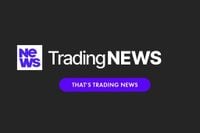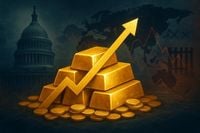Gold has always been the world’s favorite safe haven, but as of early October 2025, it’s reached dazzling new heights that have even seasoned investors doing double-takes. On October 2, 2025, gold prices soared to nearly $3,900 per ounce, shattering all previous records and marking a jaw-dropping 48% increase since the start of the year, according to reporting from MarketMinute. This unprecedented rally is more than just a number—it’s a flashing neon sign of global anxiety, economic uncertainty, and shifting investor priorities.
The timing of this surge is no coincidence. The world is currently navigating a perfect storm of crises. The United States federal government entered a shutdown on October 1, 2025, and the economic fallout has been immediate and severe. Analysts estimate this shutdown is costing the U.S. economy around $7 billion per week, with GDP growth projected to take a hit of 0.1 to 0.2 percentage points for each week the impasse drags on. The political standoff has led to widespread furloughs of federal workers and delayed crucial economic data, making it even harder for the Federal Reserve to chart a clear course.
But that’s just one piece of the puzzle. In early October, the U.S. imposed a wave of new sectoral tariffs on heavy trucks, furniture, kitchen cabinets, pharmaceuticals, timber, and lumber. Not to be outdone, the European Union quickly announced plans to double tariffs on steel imports to 50%, mirroring the U.S. rates. These tit-for-tat moves have sent shockwaves through global supply chains, driving up business costs and pushing consumer prices higher. For manufacturers, logistics firms, and retailers, the new tariffs are a bitter pill, threatening to squeeze profits and dampen consumer demand.
Amid all this turmoil, investors are seeking shelter—and gold, as always, is the go-to asset when the world feels shaky. Central banks have been snapping up gold at a record pace, with the World Gold Council noting a 10% jump in global demand during the first half of 2023, driven largely by these institutional purchases and robust retail demand in Asia. In fact, central bank buying accounted for about 20% of total gold demand last year. Exchange Traded Funds (ETFs) backed by gold have also seen massive inflows, underscoring the intense flight to safety that characterizes this moment.
India, a country where gold is woven into the fabric of culture and tradition, is feeling the effects of this global surge keenly. As the festive season approaches, gold prices in Indian cities are hovering near all-time highs. On October 3, 2025, 22-carat gold was priced at ₹61,800 per 10 grams in Delhi, Mumbai, and Kolkata, with Chennai topping the chart at ₹62,800. For 24-carat gold, the prices ranged from ₹67,500 to ₹68,500 per 10 grams. These rates, reported by Argus English and local news outlets, are significantly higher than last year, and the city-to-city differences are largely due to local taxes, transport costs, and market conditions.
Traditionally, festivals like Diwali see a surge in gold purchases as families buy jewelry and coins for religious and auspicious reasons. The India Bullion and Jewellers Association reported a 25% increase in gold jewelry demand during last year’s festival season, and this year’s demand is expected to remain strong—if perhaps a bit more restrained. According to a survey by the India Gold Policy Centre, 40% of consumers say they plan to buy smaller quantities of gold this season, thanks to the sky-high prices. Some are turning to gold ETFs or opting for lighter ornaments, a trend that reflects both the enduring appeal of gold and the reality of tighter budgets.
The rise of online gold retailers is also shaping consumer behavior. Platforms like Paytm and Goldmoney have made it easier than ever for people to buy gold digitally, offering competitive pricing, festive discounts, and secure transactions. This digital shift, accelerated by the pandemic, allows consumers to compare prices and shop from the comfort of home—an appealing prospect in uncertain times. As a result, the gold market is more competitive and accessible than ever, with online retailers vying for a piece of the action with special holiday promotions.
What’s driving this historic rally? It’s a confluence of factors. The US government shutdown has rattled markets, while new tariffs have added to business uncertainty and cost pressures. Weak US jobs data—private payrolls declined by 32,000 in September—has fueled expectations that the Federal Reserve will cut interest rates in both October and December 2025. Lower interest rates typically make gold more attractive compared to bonds, since gold doesn’t yield interest but does hold its value in turbulent times. Meanwhile, the US dollar is weakening against other major currencies, making gold relatively cheaper for international buyers and further boosting demand.
But there’s more at play than just economics. The current environment is a stark reminder of gold’s role as a barometer of global stress. According to MarketMinute, "Gold’s meteoric rise...serves as a critical barometer of profound global stress, signaling a significant shift in investor sentiment and economic paradigms." The surge reflects not just inflation fears and worries about economic growth, but also a growing distrust in government stability and traditional financial institutions. During periods of political gridlock, trade wars, and economic crises—think the oil shocks of the 1970s, the dot-com crash, or the 2008 financial meltdown—gold has consistently been the asset of choice for those seeking a safe harbor.
The winners and losers of this golden era are already emerging. Gold mining companies like Barrick Gold, Newmont Corporation, and Agnico Eagle Mines stand to reap substantial profits, as higher prices directly boost their bottom lines. Precious metals streaming and royalty firms, such as Franco-Nevada and Wheaton Precious Metals, are also poised for windfalls. On the flip side, companies dependent on global trade, like FedEx and UPS, may see reduced shipping volumes and tighter margins as supply chains buckle under the weight of tariffs and slowing demand. Retailers selling non-essential goods could struggle if consumers pull back on spending, while regional banks may face higher loan defaults if the downturn deepens.
Looking ahead, volatility seems likely to persist. Market analysts at NCDEX warn that a surge in buying ahead of Diwali could push prices even higher. "A sudden surge in buying during the last week before Diwali could push prices even higher," said Rajesh Kumar, a market analyst at NCDEX. Financial advisors are urging caution, with Anjali Mehta, a seasoned metals investment expert, advising, "While gold can be a safe investment, it’s essential for buyers to assess their financial goals. Diversification is key; gold should be just one part of your overall investment strategy."
There’s also a new twist in the tale: cryptocurrencies like Bitcoin are increasingly viewed as alternative safe havens, suggesting that the defensive playbook is evolving. As the global economic landscape grows more complex, investors are diversifying not just within traditional assets but also into digital ones, hedging against risks old and new.
As gold glitters near $3,900 per ounce, it stands as both a symptom and a signal—a testament to deep-seated anxieties and a world in flux. Whether this marks a temporary spike or a new normal, one thing is clear: in times of uncertainty, the allure of gold endures, offering a sense of stability when little else feels certain.



